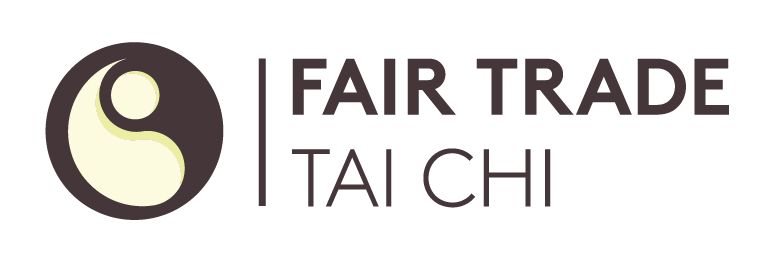What is Tai Chi chuan?
Tai Chi Chuan (also simply referred to as Tai Chi) is a series of slowmoving calisthenics connected into a 'form'. It is a form of both meditation and a soft martial art. It offers a path to harmonize both body and mind. In Chinese, Tai Chi Chuan means “Supreme Ultimate Boxing.” The Tai Chi 'form' is a sequence of slow, flowing movements based on natural principles of balance. Tai Chi is played at a slow and continuous pace, which affords a calm and attentive mind. The postures are precise but not complicated, which allows all ages to practice. The form is only about six minutes long, but can be exhausting as it requires full mindfulness if practiced correctly. Its daily practice is not to be forced, but to be played like a musician would practice a piece of music. Tai Chi is progress at the thickness of a piece of paper a day. Thus, six minutes, twice a day is a small price to pay for contributing to our overall wellbeing.
How do I learn Tai Chi?
The form is taught in weekly classes in a relaxed, fun atmosphere over a year's time. The instructor will demonstrate a movement as the students follow along as a group. Sometimes the will be asked to maintain a posture so that the instructor can give hands-on adjustments in a process called "holdand-mold". This traditional approach ensures that that you are properly aligned and are helping and not hurting your body. In each class the idea is to work on new postures in the form so that the student can practice these movements in their daily, solo practice.
In addition to the form, Tai Chi’s curriculum contained three two-person exercises, referred to as the original Thirteen Postures. They are:
Tuishou, comprised of the four postures: Wardoff, Rollback, Press, Push
Dalu, comprised of the four postures: Split, Pull, Shoulder, Elbow
Sanshou , comprised of five actions: Advance, Retreat, Look Left, Look Right, and Central Equilibrium.
As a student progresses over the years they may be invited to begin studying these advanced twoperson interactive 'forms'. At all levels of Tai Chi, no special equipment is needed. Loose, comfortable clothing and flat soled shoes are best to practice in.
How long does it take to learn the Tai Chi?
It usually takes about 50 class hours to learn the form, with daily practice at home. Next in the curriculum is 'corrections class', which is a further detailed review each part of the form and the Tai Chi principles. This class with be ongoing and is where the deeper exploration of the form and its principles happen. Students, when ready, are often asked to lead the class through a portion of the form as the rest of the class follows.
As a student progresses with the form they will be introduced to the soft two-person play of Tuishou, Push Hands. When the instructor feels that a student is ready they may be invited to also join, along with the 'corrections class,' the higher level Push Hands class. From here, working with other students, the Tai Chi player begins to understand the principles of the soft two person exercises and how the 'soft' can overcome the hard. Not all students progress to this level, but those who do begin to understand what the Tai Chi principles are about.
They say that the form is the kung fu (meaning: skill/ability) of learning about ourselves, and the two-person exercises are about learning about the other. Both study balance in the body, keeping yours, offsetting theirs. The benefits of doing Tai Chi daily have been lauded for generations: it make the weak strong, the sickly well, and the timid brave. The ultimate goal of Tai Chi is to rejuvenate the body and extend one's years!
Which Tai Chi form do you teach?
Tai Chi has been handed down for many generations within families, and different styles of Taiji are distinguished by family names (Yang, Chen, Wu, etc.). The art provides several levels of study, including a solo form, two-person exercises, and advanced work with weapons. Today, acceptance into a Taiji school is not limited to family members; the only requirements are a desire to learn and a willingness to work hard.
Fair Trade Tai Chi, Inc, teaches "Simplified Tai Chi" a form developed by Professor Cheng ManCh’ing. This form is a variation of the Yang family form. Professor shortened the form to be able to pass along Tai Chi more quickly to students. This form is easy and fun to learn while still maintaining the full richness of the art's substance and application.
Can Tai Chi books or videos help?
Nothing can replace the teacher-to-student transmission of the art. 'Familiarity of correct touch' only comes from this. But, that being said, books and videos, studied conscientiously, from the same lineage can be of immense value. The Tai Chi Classics, which is our rubric, state that the student should, "silently memorize and ponder". These written works are the cornerstone of our art and are a close companion of the advanced student. In class we do use two textbooks: for the Beginner's Class, "T'ai Chi" by Cheng Man-Ching & Mr. Robert W. Smith; and, for Corrections Class: "Cheng Tzu's Thirteen Treatises on T'ai Chi Ch'uan" by Cheng Man-Ching (trans. Lo/Inn).
Videos or books can serve as reminders of what you are working on in class and can also provide fascinating and inspiring additional background to the history, philosophy, and principles of Tai Chi chuan.

